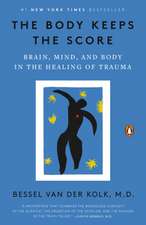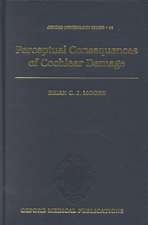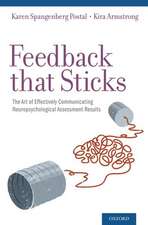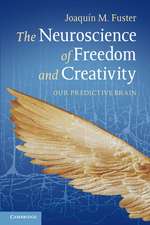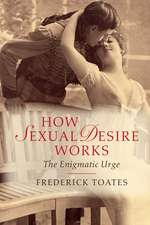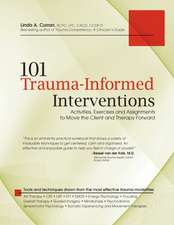Hearing: Handbook of Perception and Cognition, Second Edition
Editat de Brian C.J. Mooreen Limba Engleză Hardback – 14 sep 1995
- Covers both physiological and perceptual aspects of hearing
- Authoritative reviews by experts in the field
- Comprehensive up-to-date coverage
- An integrated work with extensive cross-references between chapters
Preț: 694.34 lei
Preț vechi: 951.15 lei
-27% Nou
Puncte Express: 1042
Preț estimativ în valută:
132.87€ • 142.08$ • 110.78£
132.87€ • 142.08$ • 110.78£
Carte tipărită la comandă
Livrare economică 17 aprilie-01 mai
Preluare comenzi: 021 569.72.76
Specificații
ISBN-13: 9780125056267
ISBN-10: 0125056265
Pagini: 468
Ilustrații: 1
Dimensiuni: 152 x 229 x 41 mm
Greutate: 0.9 kg
Ediția:00002
Editura: ELSEVIER SCIENCE
Seria Handbook of Perception and Cognition, Second Edition
ISBN-10: 0125056265
Pagini: 468
Ilustrații: 1
Dimensiuni: 152 x 229 x 41 mm
Greutate: 0.9 kg
Ediția:00002
Editura: ELSEVIER SCIENCE
Seria Handbook of Perception and Cognition, Second Edition
Public țintă
Researchers, academics, and clinicians in hearing. Psychologists interested in perception, sensory physiologists, audiologists, and audio engineers.Cuprins
W.M. Hartmann, The Physical Description of Signals.
G.K. Yates, Cochlear Structure and Function.
A.R. Palmer, Neural Signal Processing.
C.J. Plack and R.P. Carlyon, Loudness Perception and Intensity Coding.
B.C.J. Moore, Frequency Analysis and Masking.
D.A. Eddins and D.M. Green, Temporal Integration and Temporal Resolution.
J.W. Hall, III, J.H. Grose, and L. Mendoza, Across-Channel Processes in Masking.
A.J.M. Houtsma, Pitch Perception.
D.W. Grantham, Spatial Hearing and Related Phenomena.
R.M. Stern and C. Trahiotis, Models of Binaural Interaction.
C.J. Darwin and R.P. Carlyon, Auditory Grouping.
S. Handel, Timbre Perception and Auditory Object Identification.
Chapter References.
Subject Index.
G.K. Yates, Cochlear Structure and Function.
A.R. Palmer, Neural Signal Processing.
C.J. Plack and R.P. Carlyon, Loudness Perception and Intensity Coding.
B.C.J. Moore, Frequency Analysis and Masking.
D.A. Eddins and D.M. Green, Temporal Integration and Temporal Resolution.
J.W. Hall, III, J.H. Grose, and L. Mendoza, Across-Channel Processes in Masking.
A.J.M. Houtsma, Pitch Perception.
D.W. Grantham, Spatial Hearing and Related Phenomena.
R.M. Stern and C. Trahiotis, Models of Binaural Interaction.
C.J. Darwin and R.P. Carlyon, Auditory Grouping.
S. Handel, Timbre Perception and Auditory Object Identification.
Chapter References.
Subject Index.
Recenzii
"This effort is written explicitly as a handbook and could easily be used as a text in a graduate-level course. It is distinguished by three factors: its comprehensive coverage, the high quality of its content, and the uniformity of writing styles used by its contributors. These attributes are a testament to the efforts of both the editor and contributors. The latter are a truly diverse group being drawn in approximately equal numbers from the United States and Britain with a single contributor each from Australia and The Netherlands.... this is clearly a volume that should be on the shelves of every student of the hearing process whether they are veteran researchers or still in graduate school. Additionally, it will serve as an excellent sourcebook for those whose interest in hearing is more casual." --CONTEMPORARY PSYCHOLOGY
"My aim in editing this volume was to cover all major areas of hearing research with a series of coordinated and well-integrated chapters. Authors were asked particularly to emphasize concepts and mechanisms, and to attempt whenever possible to explain not just what the empirical data show, but also why they show a particular pattern.... There are many links between the phenomena and theories described in the different chapters. These links are pointed out in the extensive cross references between chapters. This should help the reader who wants to find out as much as possible about a specific topic." --BRIAN C.J. MOORE
"My aim in editing this volume was to cover all major areas of hearing research with a series of coordinated and well-integrated chapters. Authors were asked particularly to emphasize concepts and mechanisms, and to attempt whenever possible to explain not just what the empirical data show, but also why they show a particular pattern.... There are many links between the phenomena and theories described in the different chapters. These links are pointed out in the extensive cross references between chapters. This should help the reader who wants to find out as much as possible about a specific topic." --BRIAN C.J. MOORE








